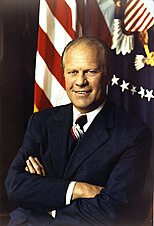United States House election, 1966
|
|
||||||||||||||||||||||||||||||||||
|---|---|---|---|---|---|---|---|---|---|---|---|---|---|---|---|---|---|---|---|---|---|---|---|---|---|---|---|---|---|---|---|---|---|---|
|
||||||||||||||||||||||||||||||||||
|
All 435 seats to the United States House of Representatives 218 seats were needed for a majority |
||||||||||||||||||||||||||||||||||
|
||||||||||||||||||||||||||||||||||

|
||||||||||||||||||||||||||||||||||
|
||||||||||||||||||||||||||||||||||
The 1966 United States House of Representatives elections was an election for the United States House of Representatives in 1966 which occurred in the middle of President Lyndon Johnson's second term. As the Vietnam War continued to escalate and race riots exploded in cities across the country, Johnson's popularity had fallen, and the opposition Republican Party was able to gain a net of 47 seats from Johnson's Democratic Party, which nonetheless maintained a clear majority in the House. This was also the first election that occurred after the Voting Rights Act of 1965 became law.
Notable freshmen included future president George H. W. Bush, future Senator and Governor of Arkansas David Pryor, future Governor of Connecticut Thomas Joseph Meskill, future Governor of Tennessee Ray Blanton, future Senators William V. Roth Jr., James A. McClure, Donald W. Riegle Jr., and William L. Scott, future Secretary of Health and Human Services Margaret Heckler, future Secretary of the Interior Thomas S. Kleppe, and future Lieutenant Governor of North Carolina James Carson Gardner.
...
Wikipedia


